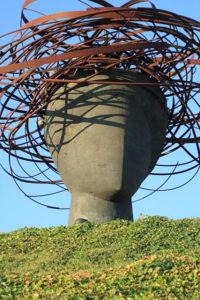- MN ABE Connect
- Archive
- Could My Student Have Dyslexia?
 April 10, 2023
April 10, 2023
Could My Student Have Dyslexia?
Wendy Sweeney, MA, Licensed Psychologist PANDA Manager Moira Knutson, PANDA Administrative AssistantCould my student have dyslexia? How do I find out? What do I do if they are dyslexic?
Read on for more information that will help you understand dyslexia, outline best practices in teaching an individual with dyslexia, and give you some ideas for the next steps.
THE FACTS:
- Dyslexia is a lifelong neurological condition which impacts how an individual
processes information. - Another term for dyslexia is a specific learning disorder (SLD) with impairment
in reading. - To be diagnosed with dyslexia, an individual needs to have at least average
Most people with dyslexia are very bright. - Dyslexics need to be taught differently using their strengths and senses.
- Magnetic resonance imaging (MRI) scans have shown the evidence of the
difference in brain structure for those with and without dyslexia.
COMMON SYMPTOMS OF DYSLEXIA:
- Difficulty breaking words down (decoding isolated words)
- Trouble spelling common words (encoding isolated words)
- Word by word reading
- Frequent re-reading
- Slowed reading and fluency
- Poor reading comprehension
Watch this short video to find out what it is like for an individual with dyslexia.
BEST INSTRUCTIONAL PRACTICES FOR DYSLEXIA
The most successful method of instruction for individuals with dyslexia is called multi-sensory instruction. The most well-known of these methods is called Orton-Gillingham.
Multi-sensory instruction involves teaching to all the senses when learning in order to access all brain pathways. For instance, using hearing, vision, touch, and movement. Examples of multi-sensory reading strategies include tracing letters and words in sand or rice trays, using textured letters, spelling words with magnetic letters, using rhyme or music, using line readers, and playing games.
See the handout titled What is Multi-Sensory Instruction for more ideas.
RESOURCES AVAILABLE AT PANDA
If you have a student you suspect has dyslexia contact PANDA to inquire about an Adult Learner Intervention which involves interviewing and screening your student. For more information go to https://pandamn.org/category/adult-learner-intervention/
Lending Library
PANDA has a lending library of materials, adaptive equipment, and assistive technology on hand which are available to Minnesota ABE teachers. Check out the Reading chapter for an assortment of multi-sensory materials available for your use: https://pandamn.org/tools/lending-library-tools-for-reading/
Accessibility Options Using Technology
There are several assistive technology programs and adaptive equipment which can be of great assistance for an individual with dyslexia. Many are already built into cell phones and computers. For example, text-to-speech, speech to text, change text color, increase text size and more. Our website has may options to choose from https://pandamn.org/category/accessibility-options-using-technology/
Specific Learning Disorders (SLD) PANDA website page
To learn more about Specific Learning Disorders also known as dyslexia visit PANDA’s website:
https://pandamn.org/category/specific-learning-disorders/
Phone: 763-504-4095 Email: [email protected] Website: https://pandamn.org

Newsletter Signup
Get MN ABE Connect—the official source for ABE events, activities, and resources!
Sign UpArticle Categories
- ABE Foundations/Staff Onboarding
- ACES/Transitions
- Adult Career Pathways
- Assessment
- CCR Standards
- Citizenship
- COVID-19
- Cultural Competency
- Digital Literacy/Northstar
- Disabilities
- Distance Learning/Education
- ELA
- Equity/Inclusion
- ESL
- HSE/Adult Diploma
- Listening
- Math/Numeracy
- Mental Health
- Minnesota ABE
- One-Room Schoolhouse/Multilevel
- Professional Development
- Program Management
- Reading
- Remote Instruction
- Science
- Social Studies
- Speaking/Conversation
- Support Services
- Teaching Strategies
- Technology
- Uncategorized
- Volunteers/Tutors
- Writing

